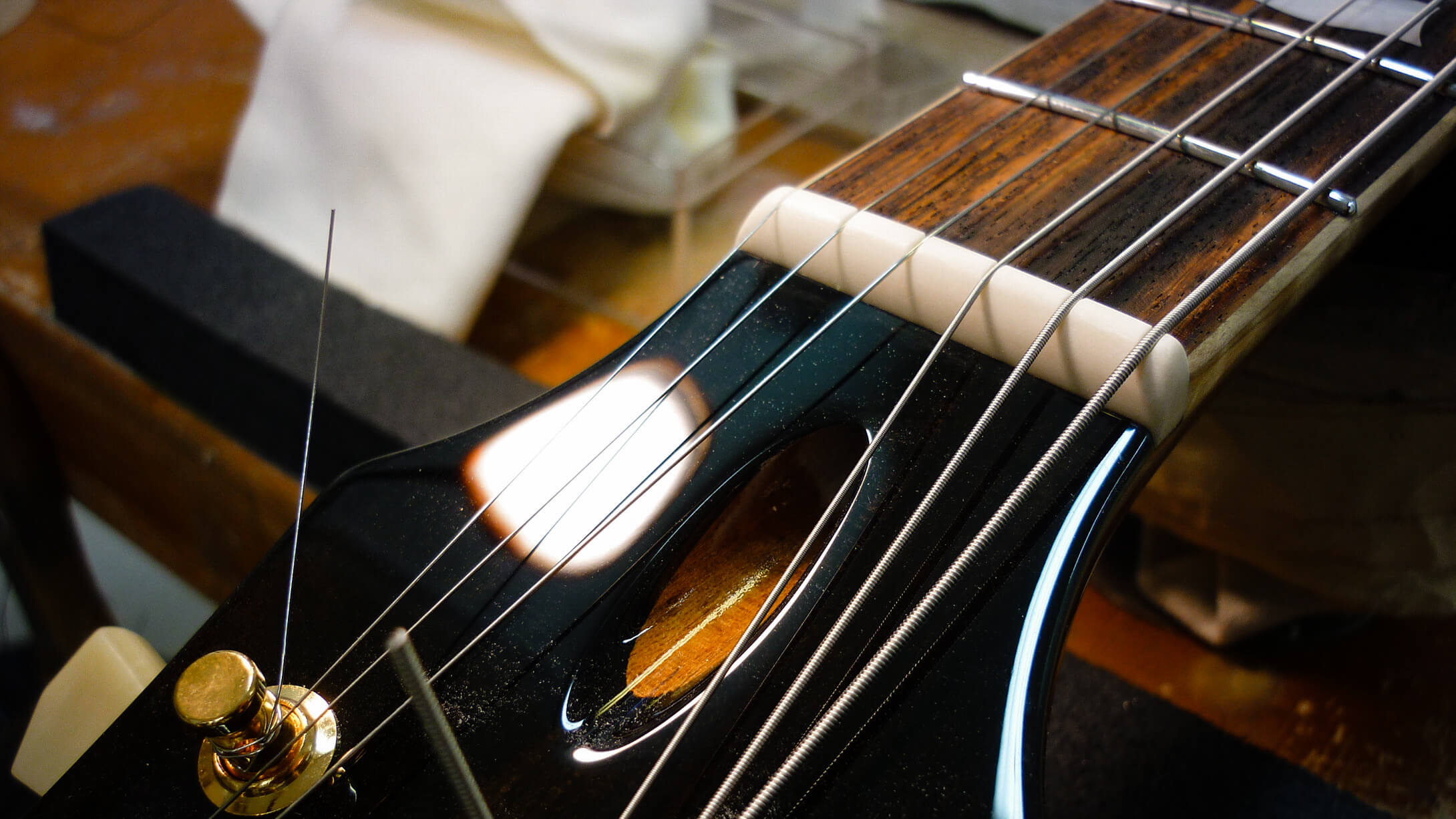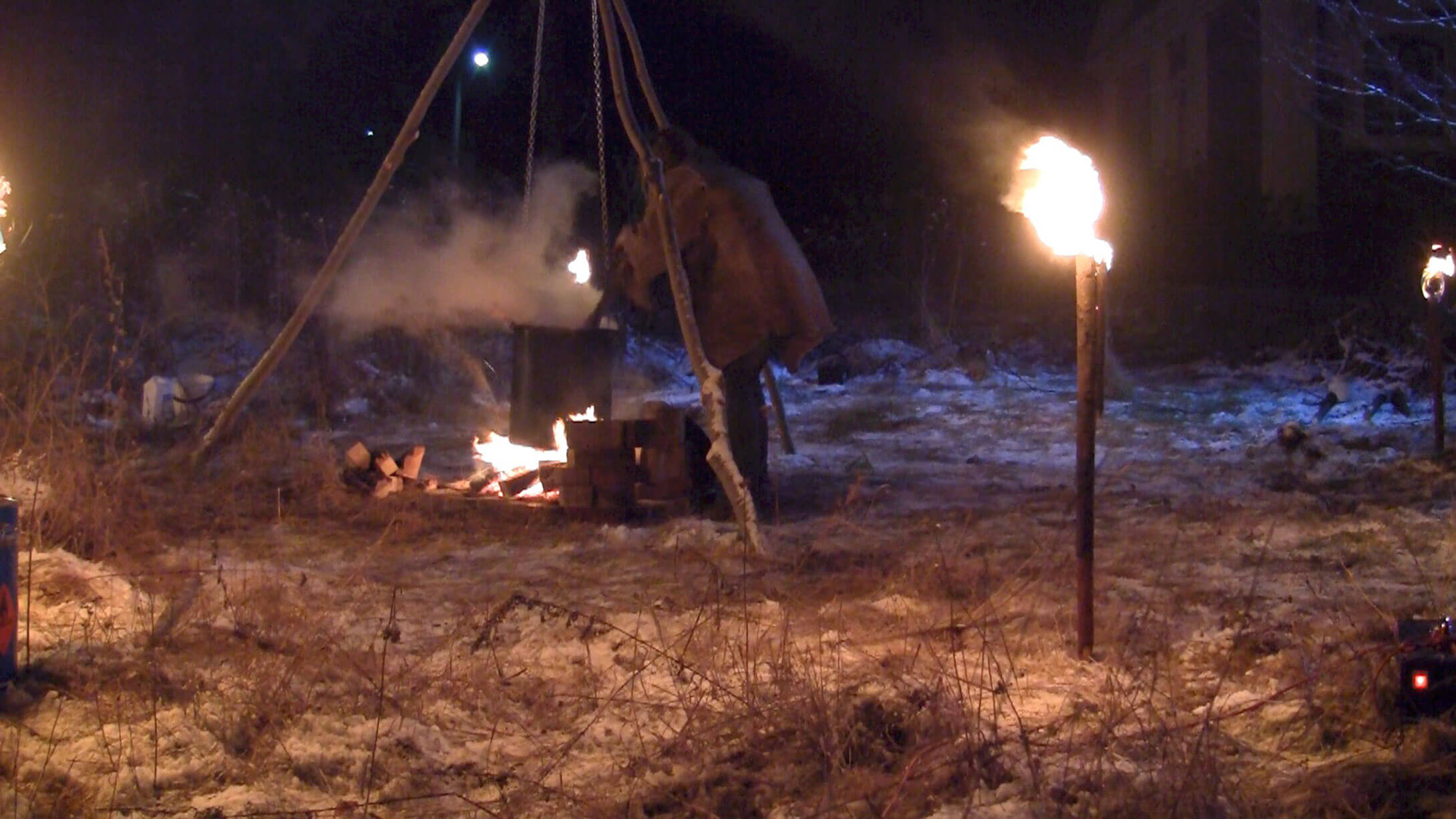
IT DOESN’T LOOK LIKE MUCH, BUT…
Tuning stability and more
The little piece guiding the strings from the tip of the fretboard to the tuners – the nut – plays an essentially important role in how a guitar stays in tune, plays and sounds.
Every detail of a detail matters..!
The material, string spacing, depth of the string slots, shape and angle of the slots – a number of variables, each and every one contributing to your guitar playing experience.
What about nut compensation?
You’ve probably heard the term ‘compensated nut’ before. This can mean a variety of things. It is common luthier tradition / knowledge to move the nut location from its’ theoretical / mathematical position slightly closer to the 1st fret in order to compensate the tension when pressing the strings to the first fret(s).
I’ve located the nuts of my guitars with this method since the very first instrument I ever made in 1992, and I’ve been very happy with the effect it has to the intonation of the guitar.
Buzz Feiten
Later I learned that the way I (and many other luthiers before my time) compensate the nut location is more or less identical with the compensation done in the ‘Buzz Feiten Tuning System’, patented in 1995…
Mastering the art
It takes years for a luthier to genuinely master the art of making a great guitar nut. It all starts from materials.
Moose shin bone
I learned to use moose (lat. ‘Alces alces‘) shin bone in the guitar making school I studied at, and even though I’ve experimented later on with numerous other materials, I’ve always ended up to the same conclusion.
The dense, consistent and naturally greasy moose bone is without a doubt the best choice for the nut. It keeps the tuning best, breaks strings the least, outlasts synthetic materials or metals and most importantly, the open notes ring with unique clarity.

OPEN FIRE AND TORCHES… REALLY?
The Spirit of the Guitar Hunt
Oh – the photo above? That guy by the open fire is me. Yes… with a Stone Age era fur on my shoulders… If you don’t connect the dots, I would strongly advise you to watch the movie ‘Spirit of the Guitar Hunt‘ and find out what such a strange picture has to do with our guitar nut material!
Let’s change perspective
There is another perspective to look at regarding my decision to use this exotic material.
We have a healthy moose population in Finland – so healthy, in fact, that the clashing of Alces alces and Homo sapiens leads to hundreds of car accidents every year. Since the amount of cars (or men) doesn’t seem to get any smaller, the moose population has to yield, unfortunately.
Worth the extra mile
We have a government controlled hunting season every autumn here in Finland, and a few hunter friends of ours bring us legs of the hunted animals. We then chop the bones into pieces and boil them on open fire long enough to remove the excess fat off the bones. Yes, primitive and hard work – but definitely worth walking the extra mile.
I consider this an environmentally viable way, too. The bone we use for guitars is a 100% by-product – no animals are ever killed for our purposes.
It is unarguably better for the environment, too, to recycle organic materials than use synthetic options.
A vegan compatible option?
For those who prefer not to have any animal origin parts in their guitars, we do offer other high quality nut options as well.